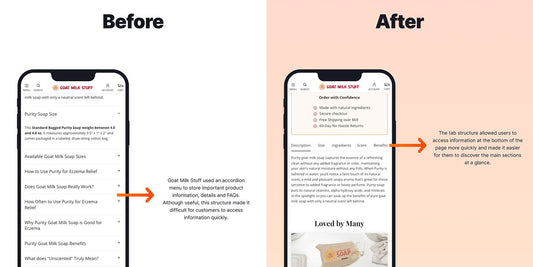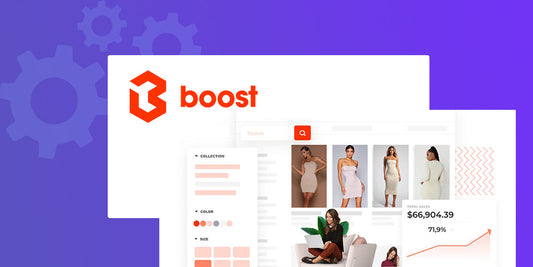Table of Contents
Get useful eCommerce stuff
Have you ever wondered who your most loyal customers are and how they impact your business in the long run? If you're eager to boost your profits and build lasting customer relationships, you're in for a treat. Imagine this: You run a fantastic store, and your customers adore your products. But do you know which ones are your true business champions? Here's where Customer Lifetime Value (CLV) comes into play, and trust us, it's a game-changer.
In this blog, you’ll discover how to identify those valuable customers who keep returning for more, bringing in steady revenue over time. And guess what? You don't need to be a math whiz; we'll walk you through it step by step.

What is Customer Lifetime Value and Why It Matters
What Is CLV?
Customer Lifetime Value is a powerful metric that holds the key to understanding the long-term worth of customers to a business. It's like having a crystal ball that predicts how much each customer will bring in over their entire journey with the company. By analysing historical data and customer behaviour, CLV estimates the net profit a business can expect from a single customer, considering factors such as purchase frequency, average transaction value, and the duration of the customer's relationship with the company. Essentially, it's a sneak peek into the future, allowing businesses to identify their most valuable customers and tailor their strategies accordingly.
To get into the nitty-gritty, let's take an example: Imagine a coffee shop trying to figure out which customers are their true caffeine enthusiasts and which prefer herbal tea. CLV would come to the rescue!
By calculating CLV, the coffee shop can distinguish the loyal coffee lovers who come in every morning and spend generously from the occasional tea drinkers. This valuable insight enables the coffee shop to pamper their coffee lovers with personalised rewards and special offers, ensuring they keep returning for their daily caffeine fix.
Simultaneously, they can maintain a friendly and welcoming atmosphere for the tea drinkers, making everyone feel appreciated. In this way, CLV empowers businesses to focus on their most valuable customers and build lasting relationships that turn coffee enthusiasts into brand advocates.
Why Does CLV Matter?
By understanding the long-term value of their customers, companies can make strategic decisions that lead to improved profitability and growth. CLV identifies the customers who contribute the most to the company's revenue and profits.
With this knowledge, businesses can channel their resources effectively, prioritising customer retention and loyalty initiatives. It's like having a secret weapon in a competitive market, as companies can focus on building solid relationships with their high CLV customers, leading to increased customer satisfaction and reduced churn.
Moreover, CLV brings clarity to the often tricky world of resource allocation. CLV guides businesses to invest their resources wisely in a world with limited marketing budgets and numerous customer segments.
By targeting their efforts towards high CLV customers, companies can optimise their marketing campaigns, leading to better returns on investment. This data-driven approach is like having a magician's wand, allowing businesses to create marketing strategies that resonate with their most valuable customers, driving repeat purchases and fostering brand loyalty.
Why CLV is Important for Your Business Growth
CLV lets you identify your most valuable customers—the ones who bring in the most profit. With this knowledge, you can focus on keeping these loyal customers happy and returning for more. By treating them well and giving them personalised rewards, you turn them into loyal advocates for your brand, boosting your business success.
CLV acts as your compass in a world with limited resources and countless customers. By targeting your marketing towards high CLV customers, you get the best return on your investment. This approach helps you create strategies that connect with your most valuable customers, encouraging them to buy from you repeatedly and strengthening their loyalty to your brand.
How to Calculate CLV - Simple Methods for Accurate Insights
Average Purchase Value (APV)

APV represents the average amount a customer spends on each transaction. To calculate it, sum up the total revenue earned during a specific period (e.g., a year) and then divide it by the number of unique customers who made purchases within that time frame. This gives you the average purchase value for each customer.
For example, if your company earned $100,000 in total revenue last year, and 500 unique customers made purchases, the APV would be:
APV = $100,000 / 500 = $200
Purchase Frequency (PF)

Purchase Frequency tells you how often, on average, customers purchase within the specified time frame. To calculate it, count the total number of purchases made by all customers during that period and divide it by the number of unique customers.
For instance, if your customers made a total of 1,200 purchases, and you have 500 unique customers, the PF would be:
PF = 1,200 / 500 = 2.4
This means customers, on average, made 2.4 purchases during the specified time frame.
Customer Lifespan (CL)

Customer Lifespan is the average duration a customer stays actively engaged with your business. To calculate it, you need to consider the total time each customer remained active and divide it by the number of active customers.
Let's say you tracked the active periods of ten customers and found the following durations (in months): 12, 18, 24, 36, 6, 30, 15, 9, 48, and 20. The sum of all active periods would be 218 months, and since there are ten active customers, the CL would be:
CL = 218 months / 10 = 21.8 months
Customer Lifetime Value (CLV)

Now comes the magic moment! After calculating APV, PF, and CL, you can find your Customer Lifetime Value. Simply multiply the Average Purchase Value by the Purchase Frequency and then by the Customer Lifespan.
In this example:
CLV = $200 (APV) * 2.4 (PF) * 21.8 (CL) = $10,368
Voilà! The estimated CLV for each customer is $10,368. On average, you can expect each customer to bring in approximately $10,368 in revenue over their entire relationship with your business.
Now that you have the secret formula to calculate CLV, it's time to implement it!
Putting CLV into Action - Strategies for Long-Term Success
Now that you've mastered calculating Customer Lifetime Value, it's time to unleash its power and transform your business into a customer-focused success story! Let's explore six strategies on how to put CLV into action for long-term growth and profitability:
Identify and Nurture High CLV Customers:
Your high CLV customers are like hidden gems in a treasure trove. You can focus on keeping them happy and engaged by identifying them. Offer personalised rewards, exclusive deals, and exceptional customer service to show them extra love. These loyal customers are more likely to make repeat purchases, spend more with your business, and even spread positive word-of-mouth, attracting new customers like a magnet.
Tailor Marketing Efforts:
CLV can be your marketing superhero! Use it to tailor your marketing efforts and messaging to different customer segments. For high CLV customers, highlight premium offerings and benefits that resonate with their preferences. For lower CLV customers, focus on converting them into higher-value ones through targeted promotions or loyalty programs. Understanding each customer's potential lifetime value allows you to make intelligent choices about how and where to allocate your marketing budget for the best returns.
Enhance Customer Retention and Loyalty Programs:
Customer retention is a secret weapon for business growth, and CLV is your guide! Develop retention strategies that keep customers coming back for more. Implement loyalty programs, rewards, and referral incentives to strengthen the bond with your high CLV customers. Keep track of their preferences and buying behaviours to offer a seamless and personalised experience, turning them into lifelong fans of your brand.
Upselling and Cross-Selling:
Upselling and cross-selling are like icing on the cake for increasing CLV. When you know your customer's preferences and habits, you can offer them complementary products or upgrades that match their interests. This boosts revenue from each customer and enhances their overall experience with your business, increasing the likelihood of repeat purchases.
Provide Outstanding Customer Service:
Happy customers are loyal customers, and CLV reminds us of that truth. Invest in outstanding customer service to exceed your customers' expectations. Address their concerns promptly, listen to their feedback, and go the extra mile to resolve issues. A satisfied customer is more likely to stick around and become a valuable long-term patron.
Monitor CLV Trends Over Time:
Keep an eye on your CLV trends to stay ahead of the game. Analyse changes in customer behaviour and identify any dips in CLV early on. Understanding these fluctuations can help you adjust your strategies, tackle potential churn issues, and seize growth opportunities.
Unleashing the Power of CLV for Sustainable Business Growth
You've mastered Customer Lifetime Value and discovered its immense potential in driving long-term business success. Armed with this powerful metric, you can identify your most valuable customers, tailor your strategies, and pave the way for sustainable growth and profitability.
Calculating CLV doesn't require being a maths whiz; it's a straightforward process yielding invaluable insights. By understanding the average purchase value, purchase frequency, and customer lifespan, you can estimate the revenue each customer will likely bring in over their entire journey with your business. As you put CLV into action, you'll be amazed by its impact on your customer relationships and bottom line.
If you have any questions, need guidance, or want to explore how to make the most of CLV for your business, feel free to contact us here at Blend.








